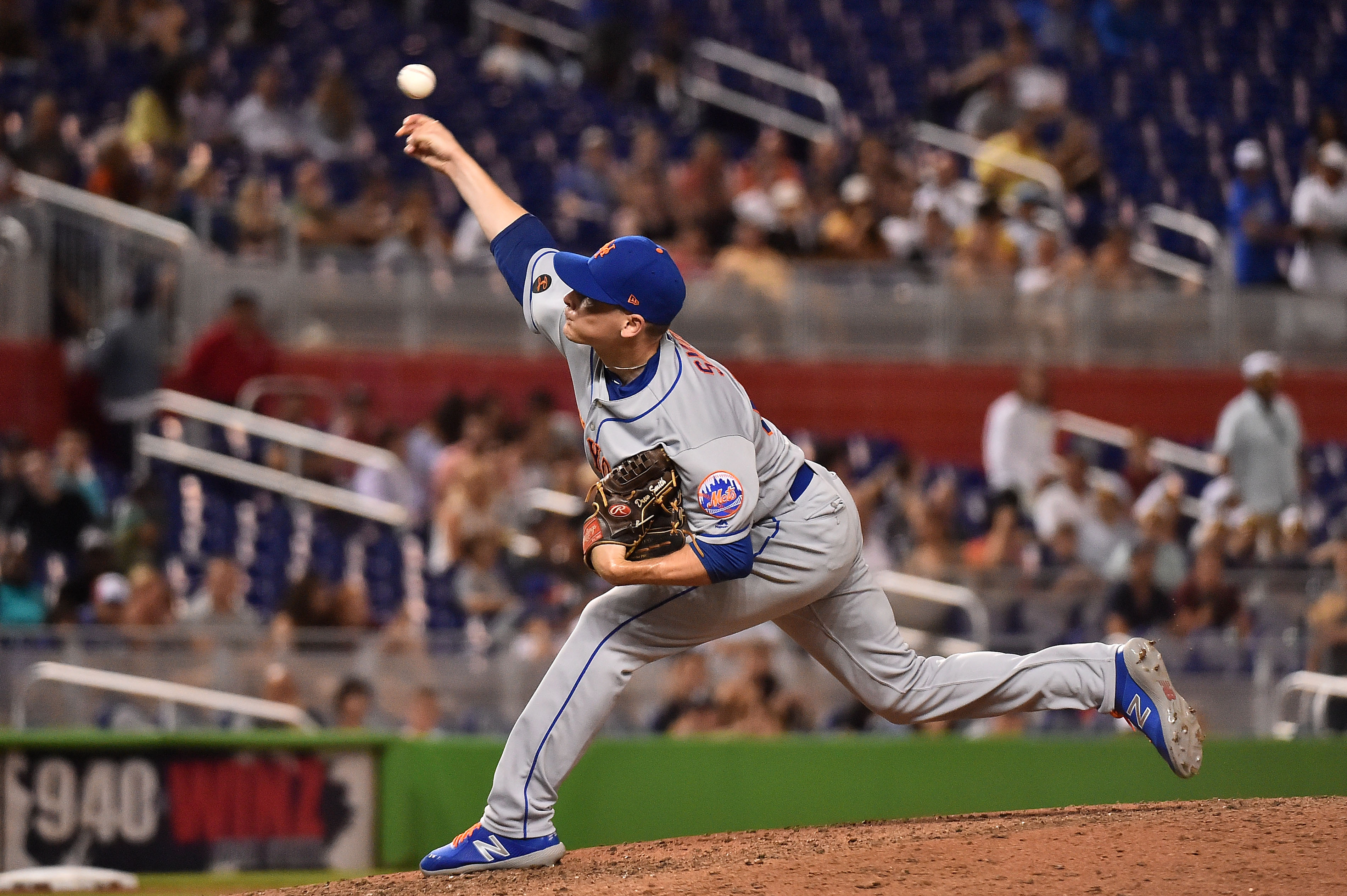When the Mets were selling off their veteran pieces last summer, the returns the organization was looking to bring back were consistent: Young, controllable, power bullpen arms.
New York imported Jamie Callahan, Gerson Bautista, Stephen Nogosek, Jacob Rhame, Eric Hanhold, Ryder Ryan and Drew Smith as they shipped out anything that wasn’t nailed down, but it is Smith who has, without question, been the one who has broken free from the pack when the Mets begin sizing up their 2019 relief corps.
In a season that has become nothing more than an audition for future roles, the Amazins’ have begun to thrust their young pitchers into more high leverage situations, and while most of the bullpen has struggled, Smith, whom the Mets brought back from Tampa Bay in exchange for Lucas Duda last year, has thrived.
In 13 major league appearances, the 24-year-old has pitched to a 1.84 ERA with a 1.16 WHIP, while walking only three men in 14.2 innings and surrendering only one home run. His strikeout rate has been a little lower than it was in the minors, but getting weak contact and quick outs has allowed him to keep his pitch count down, and he’s been able to contribute multiple innings twice.
Smith features an upper 90s fastball with a pretty good curve for a late-inning reliever and, factoring in his minor league closing experience and career-long impressive command, the Texas native could blossom into a set-up man for the Mets as early as next season.
Unfortunately for New York, the rest of their 2019 bullpen outlook is far cloudier; even a casual observer of the 2018 Mets would tell you their two best relievers have been converted starters Robert Gsellman and Seth Lugo, and while Gsellman figures to be a main cog again next season, there have been rumblings the club would like to move Lugo back into a starting role next spring, given the shakiness of the rotation. The most pressing issue New York’s front office will face in designing their bullpen in the offseason will be determining if they want to transition Gsellman into a closer or continue using him as a multi-inning middle of the game weapon. That seems to make the most sense, but if that is the case if stands to reason the team will need to add an external arm to finish games.
After Gsellman and Smith, there will be very few locks entering spring training, and a look at the rest of the arms the team landed last summer should tell you a lot of the reason why.
- The Mets really liked Callahan when they acquired him from Boston, but a shoulder injury has cost him all of 2018 (but somehow not his 40-man spot yet).
- Nogosek pitched very well in the Florida State League for St. Lucie this season but has struggled immensely in Double-A Binghamton. It’s unlikely he’ll be a factor at the major league level any time soon.
- Bautista has made five appearances for the big league club this year and been blasted for six runs in 4.1 innings, which amounts to a 12.46 ERA. It’s a tiny sample size, but not exactly a great first impression.
- Rhame has been a disaster, pitching to a 7.25 ERA in 22.1 innings, allowing the opposition to hit .298 against him and surrendering an eye-opening seven homers.
- Hanhold was very impressive in Binghamton this season, but similarly to Nogosek, a promotion to a higher level hasn’t been kind to the righty. In 12 games with Las Vegas, his ERA is over 6.
- Ryan has looked good at times this season, but like many of these arms, his ascension to a higher level, in his case Double-A, has had growing pains.
Another aspect to the Mets’ complicated bullpen construction is that arms they drafted and developed internally have failed to really take off in 2018.
- Tim Peterson was very impressive when he was first promoted, pitching to a 0.96 ERA in June, but since then he’s basically thrown batting practice, elevating his season numbers to a 7.54 ERA with a 1.46 WHIP in 22.2 innings.
- Tyler Bashlor was aggressively promoted directly from Double-A, and the results have shown he wasn’t quite ready to skip Las Vegas entirely. In 15 games for the Mets, he’s struck out only 13 hitters in 23.2 innings, and surrendered five long balls en route to an ERA just under 5.
- Paul Sewald has gotten the most extended look of any 2019 bullpen hopefuls, but he’s pitched to a 5.54 ERA in 38 contests, and he was never worse than his frankly embarrassing outing Sunday against Washington.
- Corey Oswalt has worked both out of the rotation and bullpen, but a 5.84 ERA with 12 homers allowed in just under 50 innings won’t play in either role.
- Triple-A starters Chris Flexen and P.J. Conlon have been horrid when given brief opportunities in the majors this season.
Smith’s emergence has largely gone under the radar amid the more pressing struggles of his teammates, but his success has arguably been one of the more encouraging developments for the Mets as this season heads to the home stretch. Everyone knows pitchers can be fickle and New York knew they wouldn’t hit on all of the arms they brought in at the trade deadline last year, but the hope was at least a few would work out.
So far, a few has turned into one.
Photo credit: Jasen Vinlove – USA Today Sports

Jacob Rhame has been awesome lately for Las Vegas. I think he’s still got some potential. Bautista’s pitches are flat as a pancake and even AAA hitters can smoke a 100 mph fastball with no movement.